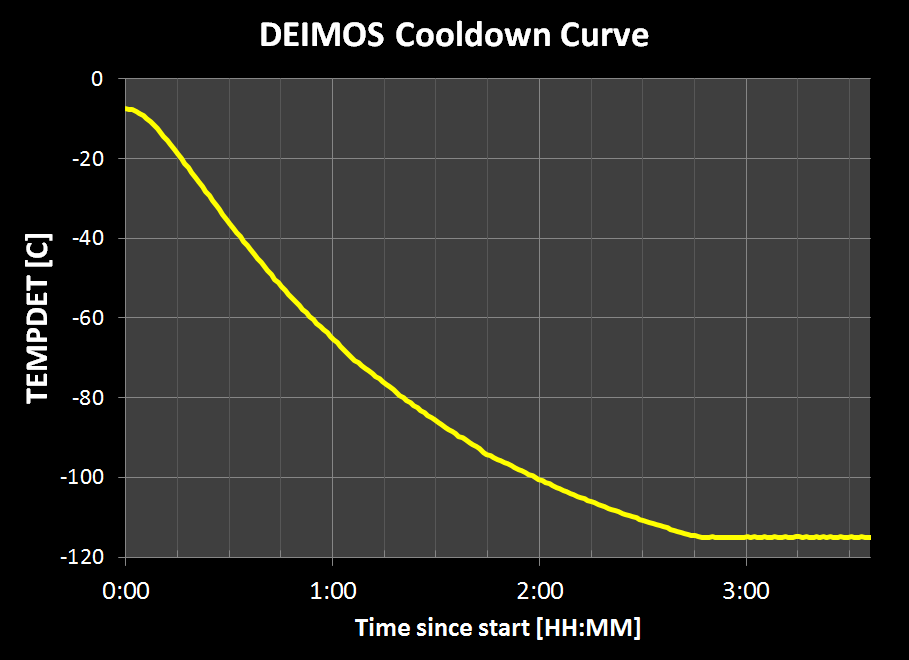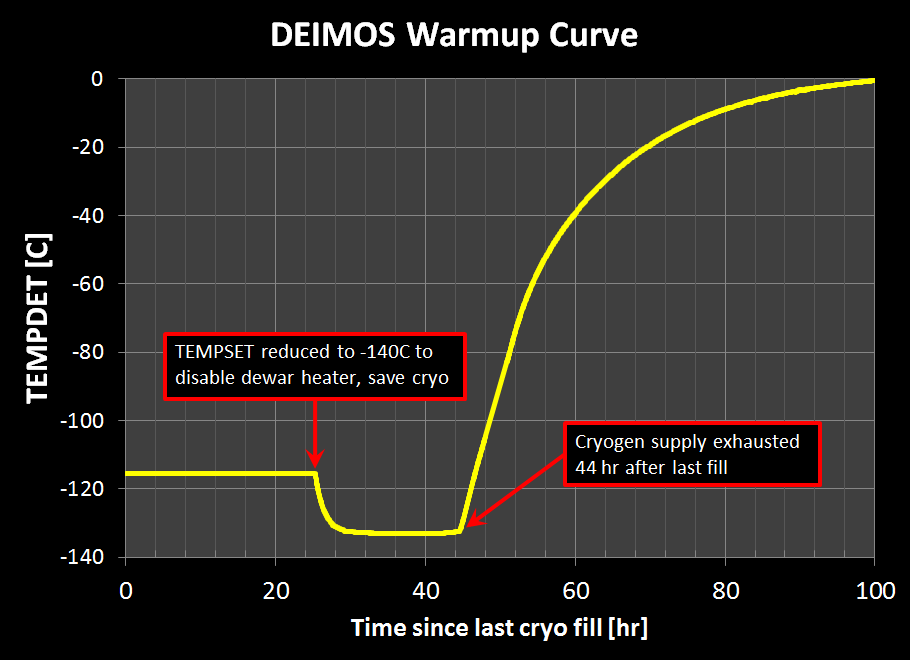Background
The DEIMOS CCD dewar is cooled by liquid nitrogen (LN) cryogen in
order to maintain the detectors at their ideal operating
temperateres of -115 C. This webpage describes adopted
practices in achieving accepable dewar vacuum, timescale for
cooling the dewar after a warm fill and for warming the dewar when
cryogen is exhausted.
Configuration
The DEIMOS CCD dewar actually consists of three distinct volumes:
- the LN can, a moderately-sized volume which is largely
occupied by the LN reservoir;
- the connector, a small volume which connects the two larger
volumes;
- the detector vessel, a large volume which contains the
detector mosaic.
Please note that the vessels are not interconnected and
must be pumped down separately.
Acceptable Vacuum
Given the value of the DEIMOS detector mosaic, care must be taken
to prevent contamination of the dewar environment. The system
includes two ion pumps to remove volatile substances
from the dewar environment. Prior to cooling the dewar from
ambient dome temperatures (near 0 C) to detector operating
temperatures (near -115 C), the three separate dewar vessels
must be pumped until a vacuum of 1×10-7
Torr. The smaller volumes can be effectively evacuated
within 24 hours using a good vaccum pump, but the main detector
vessel will typically require several days to a week of pumping to
achieve the target value.
Note that to 2 meters of vacuum pipe are required to connect the
vacuum pumps to the DEIMOS dewars
Cooldown Curve
The following plot shows the behavior of the dewar temperature
following a warm fill. The dewar can typically achieve the
standard operarting temperature within about three hours after the
initial cryo fill.
 Click to enlarge
Click to enlarge
Warmup Curve
The DEIMOS dewar has a hold time of about 44 hours. In the event
that lack of access to the summit forces an LN fill to be skipped,
it may be possible to extend the hold time slightly by resetting
the temperature setpoint of the detector system below the nominal
value of -115 C via
modify -s deiccd tempset=-140
Doing so will effectively disable the dewar heater and may reduce
the rate of LN consumption slightly.
 Click to enlarge
Click to enlarge
If the dewar warms above -100 C, then it is possible that
volatiles will begin to escape from the ion pump and will
contaminate the dewar. In these circumstances, it is best to
allow the dewar to warm to ambient temperature and pump the
dewar.
 Click to enlarge
Click to enlarge